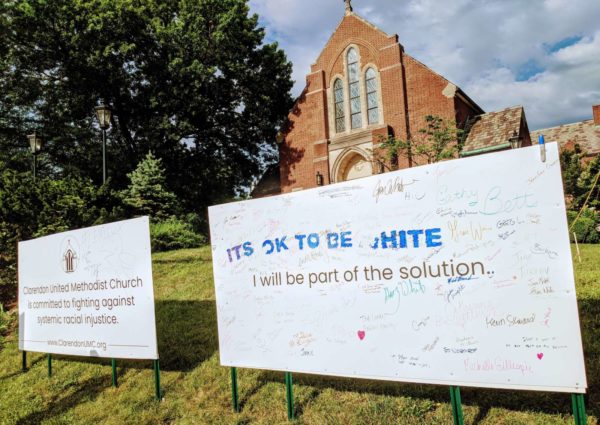worldinmiddleeast.blogspot.com
This article discusses the global proliferation of various front-of-pack nutrition labeling systems, launched as a tool to help control and reduce the incidence of obesity and other noncommunicable diseases, such as cardiovascular diseases, some cancers, and diabetes. The author addresses critical changes introduced internationally to food and beverage labels, proposals that are currently under consideration, and key elements companies should be aware of when planning marketing strategies.
Introduction
During the past decade, the World Health Organization (WHO)
1 and its regional offices have intensified calls for countries to adopt policy, legal, and regulatory measures to help reduce the incidence of obesity and other noncommunicable diseases (NCDs) associated with unhealthy diets.
Suggested regulatory measures for foods and beverages include mandatory labeling requirements for a comprehensive declaration of key nutrients; restrictions on their sales, marketing, and advertising ‒particularly those directed at children; increases on taxation; and reformulation requirements.
However, it is important to point out that prepackaged processed foods and beverages with high content of critical nutrients, such as fat, sodium and sugar, and energy (calories), have become key targets for applying those measures.
In 2015, the United Nations (UN) adopted the 2030 Agenda for Sustainable Development Goals,
2 including a sustainable development goal (SDG)
3 to “ensure healthy lives and promote well-being for all, at all stages.” As part of SDG 3, Target 3.4 states the commitment to, “By 2030, reduce by one-third premature mortality from noncommunicable diseases through prevention and treatment and promote mental health and well-being.” In addition, three High-Level Meetings of the UN General Assembly on the Prevention and Control of NCDs have been held, resulting in commitments by UN member states to develop and implement cost-effective, evidence-based interventions, as well as good practices, based on those recommended by the WHO.
3
Among the broad catalog of measures, policy makers recognized the establishment of front-of-pack (FoP) nutrition labeling systems as an important tool for helping consumers make healthier choices and meet the outlined targets.
In that context, alternative FoP nutrition labeling schemes have been designed and evaluated to help consumers understand the nutritional value of their food and beverage products of choice. In some cases, priority has been given to warning consumers about the excessive or high content of critical nutrients in the products. In other cases, the aim has been to provide score indicators to help consumers compare the nutritional values in foods across a range of products and to help identify nutritious products.
These efforts have resulted in a proliferation of diverse FoP nutrition labeling systems in markets around the globe. As a result, companies need to be aware of the critical labeling requirements and conditions to identify challenges and opportunities when planning marketing strategies.
Global policy: WHO and Codex Alimentarius
FoP labeling is an important element of WHO’s global policy for encouraging governments to develop mandatory FoP labeling systems to reduce consumption of processed foods and beverages that are associated with unhealthy diets. In doing so, WHO has developed recommendations for countries to consider when they create their own systems. In 2019, WHO compiled its recommendations into a single document to inform the work of the Codex Alimentarius
4 on FoP nutrition labeling. The priority focus is prepackaged processed foods and beverages. WHO recommendations and principles include:
5
- Identifying “negative” nutrients of concern for diet-related NCDs, particularly saturated and trans fatty acids; sodium (or salt); and free, added, or total sugars, as well as energy.
- Defining nutrient profiling as “the science of classifying or ranking foods according to their nutritional composition for reasons related to disease prevention and health promotion.”
- Having mandatory nutrient declarations on food packages as a prerequisite for FoP labeling systems.
- Ensuring that FoP labeling systems are interpretive, based on symbols, colors, words, or quantifiable elements.
- Requiring that content encompasses nutritional criteria and food components to inform choice and enable interpretation of food products against risks for diet-related NCDs, and for promoting healthy diets.
- Developing a monitoring and evaluation process as part of the overall FoP labeling system for continuing improvements or adjustments as required.
Codex Alimentarius: Labeling and nutrition
In 2017, the Codex Committee on Food Labeling (CCFL) identified the need for developing guidelines on FoP nutrition labeling to provide global consistency in facilitating consumer understanding of the nutritional value of foods while also minimizing any impediments to trade that may arise with the proliferation of different systems.
6 Consequently, the Codex Alimentarius Commission, the highest decision-making body in Codex, endorsed the CCFL agreement to start new work on developing guidelines for FoP nutrition labeling.
The 45th session of the CCFL, held in 2019, agreed that the purpose of the Codex guidelines on FoP nutrition labeling is to “provide general guidance to assist in the development of front-of-pack nutrition labeling, a form of supplementary nutrition information, as a tool to facilitate the consumer’s understanding of the nutritional value of the food and their choice of food, consistent with the national dietary guidance or health and nutrition policy of the country or region of implementation.” Thus, rather than building a harmonized model, the goal is to develop general principles to assist governments in developing their own models. The CCFL has engaged in considerable discussion about the scope of the guidelines, the definition of FoP nutrition labeling, and the general principles around FoP nutrition labeling. CCFL has agreed to continue with discussions at its next session.
7
On the other hand, following a previous request by the CCFL, in 2019, the 41st session of the Codex Committee on Nutrition and Foods for Special Dietary Uses agreed to consider, in 2020, a proposal for devising general guidelines to assist governments in developing their own nutrient profiles specific to FoP nutrition labeling systems.
8
The work of the Codex Alimentarius on FoP nutrition labeling is highly relevant, considering that its standards and guidelines are the first international reference point for food regulations. In particular, Codex standards and guidelines on food labeling have been implemented at regional and national levels in different parts of the world. Although numerous FoP nutrition labeling systems have been developed so far, many countries still expect the Codex work to progress to a point where they can develop their systems at the national level. That also applies in cases where regional harmonization initiatives on FoP nutrition labeling are being discussed.
FoP nutrition labeling trends
The lack of global and regional consistency on FoP nutrition labeling has resulted in the proliferation of a range of systems in various parts of the world. Such variety means there are important differences between them, such as:
- Some systems are voluntary, whereas others are mandatory.
- The nutrients listed or taken into account vary between fats and/or saturated fats, and/or trans fatty acids; sodium or salt; sugars and/or added sugars and/or free sugars; and/or energy value; and/or other positive nutrients.
- Nutrient-profiling thresholds, calculated either per serving or per 100 g of a food or beverage, and the food categories for their application, vary.
- Some systems are informative and include information about the amount of key nutrients in the product, whereas others are interpretative, based on symbols, colors, words, and statements ‒or are a mixture of informative and interpretative approaches.
- Diverse interpretative systems have been designed with differences on symbols, colors, words and layout.
Despite those differences, some trends are being observed. For example, there has been a shift over the years from using informative systems in favor of a broader application of interpretative systems. The guideline daily amounts system, which provides information on a product’s amount of energy in the FoP and on nutrients on the back of pack, based on a portion size for the average adult, has been replaced by FoP “healthy choice” logo models in South East Asian countries. South Korea has adopted a “traffic lights” (red-orange-green) color-coded FoP labeling system. Other Asian countries are in discussions about adopting a similar system.
In the south western Pacific, it is worth pointing out the success of the Five (5) Health Star Rating System in Australia and New Zealand. The system uses stars to rank the nutritious value of foods, defined by negative and positive nutrients and other components.
Latin America
Mexico is good example of the impact of the transition from informative to interpretative mandatory systems. A mandatory FoP guideline daily amounts system was introduced in Mexico in 2016 but was replaced earlier this year by another mandatory FoP system that uses warning signs and statements to highlight the “excessive” content of certain nutrients. Manufacturers of foods and beverages were given 6 months to change their labels to comply with the first phase of application by October 2020, with further changes expected to comply with the subsequent phases.
The FoP nutrition labeling system with warning statements follows a pattern initiated by Chile and which was adopted in other Latin American countries. Chile pioneered a model in the Latin American region using warning octagonal stop signs on a black background that includes statements referring to products high in calories, sugars, sodium, or saturated fats. Peru and Uruguay are among the countries to have adopted similar models. There are some variations among these countries in relation to the listed nutrients, applied nutrient-profiling thresholds, and required warning statements.
Also in the Latin American region, Ecuador adopted the traffic-light, color-coded FoP labeling system in 2014. Colombia is currently discussing development of an alternative FoP nutrition labeling system using circle signs, whereas a recent bill promotes the adoption of the model with black octagons with warning statements. In 2019, Brazil launched a public consultation proposing a mandatory FoP labeling model based on Canada’s system that includes labeling products high in sugars, sodium, and/or saturated fats with a magnifying glass symbol.
European Union
In the EU, a variety of FoP schemes have been developed. All of them are voluntary under EU law, for example, Regulation (EU) No. 1169/2011 on the provision of food information to consumers, which provides harmonized nutrition labeling requirements applicable to EU member states.
9
The keyhole logo had already been introduced in Sweden and Denmark before the adoption of the EU regulation. Positive-sign logo systems were developed in Finland and Slovenia. Other countries followed with similar systems after the adoption of the EU regulation. In 2013, the UK, then still an EU member state, adopted the traffic-light FoP system, combining color coding and percentage reference intakes.
In 2017, France adopted the Nutri-score FoP scheme, also color-coded and with letters from A to E, based on the UK profiling model. The Nutri-score system indicates the overall nutritional quality of a given food item and has become popular among other EU member states. Belgium has adopted it, and Germany, Spain, the Netherlands, and Luxembourg are in the process of doing so.
In contrast to the trend in the EU for adopting interpretative systems based on symbols, colors, and/or words, Italy opted for an informative FoP system called the NutrInform Battery. It is based on reference intake label indicating the amounts of energy and nutrients in a single serving as percentage of the daily intake.
The recently published European Commission Report on the use of additional forms of expression and presentation of the nutrition declaration
10 includes a table with FoP nutrition labeling schemes at the EU member states’ and UK levels and a figure with examples of schemes used at international level:
TABLE Typologies and formats of FoP nutrition labeling schemes implemented, proposed, or announced at the EU member state and UK levels 
FIGURE Examples of schemes used at the international level 
Calls for regional harmonization
There have been calls to harmonize FoP nutrition labelling systems to address the complexities arising from having different systems and the impact that has on trade.
In Latin America, ministers of health in the Southern Common Market, MERCOSUR,11 have signed a formal agreement to develop a harmonized scheme for the four member states. Other Latin American trade blocs, such as the Pacific Alliance12 and the Central American Integration System,13 are also debating harmonization initiatives.
In the case of the EU, calls for harmonizing an FoP nutrition labeling system came from the European Parliament, EU member states, and representatives of the private sector and civil society. In that regard, the European Commission addressed the matter in its long-awaited report on use of additional forms of expression and presentation of the nutrition declaration,10 published 20 May 2020.
The report indicates that the evidence at this stage on the impact of FoP labeling on the healthfulness of diets and on health itself, and on the free circulation of products in the EU market, is limited and inconclusive. However, it highlights that the European Green Deal14 states that a “Farm-to-Fork” Strategy will put forward actions to help consumers choose healthy and sustainable diets. Given this political priority, the report concludes that it seems appropriate to introduce a harmonized mandatory FoP nutrition labeling at the EU level. The report further indicates that the European Commission will prepare a legislative proposal in line with the objectives of the Farm-to-Fork Strategy and with better regulation principles. At the same time, the Farm-to-Fork Strategy for a fair, healthy, and environmentally friendly food system,15 also published on 20 May, notes that the European Commission will propose harmonized mandatory FoP nutrition labeling.
Conclusion
Current global policy on health and nutrition favors the expansion of FoP nutrition labeling systems. The policy has resulted in the proliferation of a variety of different systems while countries debate proposals for setting up additional systems. More may follow. However, the role of the Global Action Network on Nutrition Labeling,16 created in 2019 under the leadership of Australia and France, joined by Chile, has been to share experiences and good practices and provide mutual support to accelerate implementation of effective nutrition labeling policies. At the same time, international and regional initiatives are being discussed to harmonize principles and approaches on FoP nutrition labeling.
All these developments, together with the WHO recommendation to monitor and evaluate FoP labeling systems for applying improvements or adjustments as required, have contributed to changes in nutrition labeling requirements. Companies need to keep current with this evolving regulatory environment so that they can develop successful marketing strategies. They are doing this by adapting their products to present and future needs and requirements, navigating the current complexities and trends, and identifying the business opportunities in helping consumers by directing their choices while avoiding potential consumer confusing.
Abbreviations
CCFL, Codex Committee on Food Labeling; EU, European Union; FoP, front-of-pack; NCD, noncommunicable diseases; SDG, sustainable development goal; UN, United Nations; WHO, World Health Organization.
References
- World Health Organization. http://www.who.int. Accessed 26 May 2020.
- United Nations Sustainable Developments Goals. https://sustainabledevelopment.un.org/?menu=1300. Accessed 26 May 2020.
- United Nations General Assembly. Resolution A/73/L.2: Political declaration of the third high-level meeting of the General Assembly on the prevention and control of non-communicable diseases. https://undocs.org/en/A/RES/73/2. Dated 17 October 2018. Accessed 26 May 2020.
- Codex Alimentarius Commission. http://www.fao.org/fao-who-codexalimentarius/en/. Accessed 26 May 2020.
- World Health Organization. Guiding principles and framework manual for front-of-pack labeling for promoting healthy diet. https://www.who.int/nutrition/publications/policies/guidingprinciples-labeling-promoting-healthydiet/en/. Dated May 2019. Accessed 26 May 2020.
- Codex Alimentarius Commission. Report of the forty-fourth session of the Codex Committee on Food Labelling [REP18/FL]. http://www.fao.org/fao-who-codexalimentarius/sh-proxy/en/?lnk=1&url=https%253A%252F%252Fworkspace.fao.org%252Fsites%252Fcodex%252FMeetings%252FCX-714-44%252FREPORT%252FREP18_FLe.pdf. Meeting, 16-20 October 2017. Accessed 29 June 2020.
- Codex Alimentarius Commission. Report of forty-fifth session of the Codex Committee on Food Labelling [REP19/FL]. http://www.fao.org/fao-who-codexalimentarius/sh-proxy/en/?lnk=1&url=https%253A%252F%252Fworkspace.fao.org%252Fsites%252Fcodex%252FMeetings%252FCX-714-45%252FFinal%252520Report%252FREP19_FLe.pdf. Meeting, 13-17 May 2019. Accessed 29 June 2020.
- Codex Alimentarius Commission. Report of the forty-first session of the Codex Committee on Nutrition and Foods for Special Dietary Uses [REP20/NFSDU]. http://www.fao.org/fao-who-codexalimentarius/sh-proxy/en/?lnk=1&url=https%253A%252F%252Fworkspace.fao.org%252Fsites%252Fcodex%252FMeetings%252FCX-720-41%252FReport%252FAdoption%252FREP20_NFSDUe.pdf. Meeting, 24-29 November 2019. Accessed 29 June 2020.
- EUR-Lex. Regulation (EU) No 1169/2011 of the European Parliament and of the Council of 25 October 2011 on the provision of food information to consumers. https://eur-lex.europa.eu/legal-content/EN/TXT/?uri=CELEX:02011R1169-20180101. Accessed 26 June 2020.
- European Commission. Report from the Commission to the European Parliament and the Council regarding the use of additional forms of expression and presentation of the nutrition declaration. COM(2020) 207 final. https://ec.europa.eu/food/sites/food/files/safety/docs/labeling-nutrition_fop-report-2020-207_en.pdf. Dated 20 May 2020. Accessed 25 June 2020.
- Mercado Común del Sur (MERCOSUR). Mercado Comum do Sul (MERCOSUL). https://www.mercosur.int/. Accessed 26 May 2020.
- Alianza del Pacífico. https://alianzapacifico.net/en/. Accessed 26 May 2020.
- Sistema de Integración Centroamericana (SICA). https://www.sica.int/. Accessed 26 May 2020.
- EUR-Lex. Communication from the Commission to the European Parliament, the European Council, the Council, the European Economic and Social Committee and the Committee of the Regions: The European Green Deal [COM/2019/640 final]. https://eur-lex.europa.eu/legal-content/EN/TXT/?qid=1588580774040&uri=CELEX:52019DC0640. Dated, 12 November 2019. Accessed 29 June 2020.
- EUR-Lex. Communication from the Commission to the European Parliament, the Council, the European Economic and Social Committee and the Committee of the Regions: A Farm-to-Fork Strategy for a fair, healthy and environmentally-friendly food system [COM/2020/381 final]. https://eur-lex.europa.eu/legal-content/EN/TXT/?qid=1590404602495&uri=CELEX%3A52020DC0381. 20 May 2020. Accessed 29 June 2020.
- UN System Standing Committee on Nutrition. Establishment of the Global Action Network on Nutrition Labelling, 6-7 February 2019. https://www.unscn.org/en/topics/un-decade-of-action-on-nutrition?idnews=1919. Accessed 26 May 2020.
About the Author
David Pineda Ereño, LLM, is managing director of DPE International Consulting, an international consultancy firm that provides legal advice and strategic solutions on the policy, regulation, and trade of foods, beverages, food supplements, and other nutritional products. Pineda has more than 17 years of experience providing strategic and regulatory advice to companies, trade associations, and government bodies in the food, nutrition, and health arena at national, regional, and international level in Asia, Europe, Latin America and the Caribbean, and the US. This also includes his expertise in regulatory harmonization processes in international organizations such as the Codex Alimentarius Commission; in the notification processes of regulations to the World Trade Organization; and in the development of international policies on health and nutrition, such as the World Health Organization and the Pan American Health Organization. He has a law degree from the University of Deusto, Bilbao, Spain and a master’s degree in comparative law and European law from the University of Maastricht, The Netherlands. He can be contacted at
davidpineda@dpeic.com.
Citation Pineda Ereño D. Global front-of-pack nutrition labeling schemes: Impact on marketing strategies
June 2020.
Regulatory Focus. Regulatory Affairs Professionals Society.,
Let's block ads! (Why?)
"front" - Google News
June 30, 2020 at 02:54AM
https://ift.tt/31t10UB
Global front-of-pack nutrition labeling schemes: Impact on marketing strategies - Regulatory Focus
"front" - Google News
https://ift.tt/3aZh1mr
https://ift.tt/3b2xvu5



















